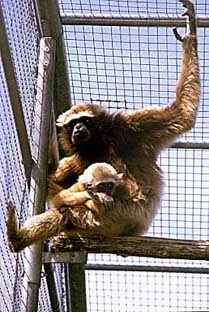 |
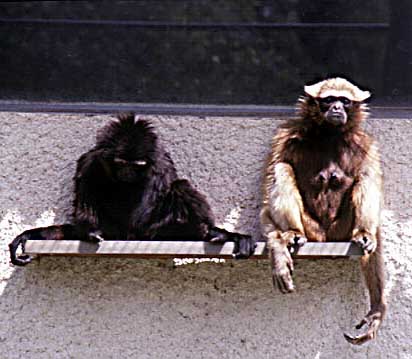
|
Adult female "Singa" (with infant, born on
20 Nov. 1987), Zoo Asson, France, 1 June 1988.
Light variant with brown ventral parts. |
Adult male "Tout Petit" and adult female
"Singa", Zoo Asson, France, 1 June 1988.
This black male is the father of the pale infant shown in the previous photograph.
The long temporal tufts visible in the female are common in agile gibbons, but not
in lar gibbons. |
 |
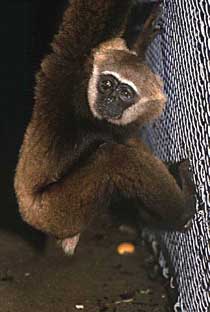 |
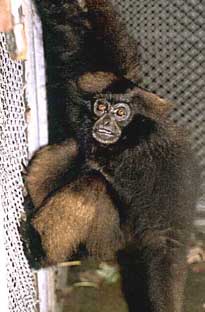 |
Adult female, Singapore Zoo, 5 March 1993.
Intermediate variant. This gibbon is not buffy coloured like the light variant shown
above. The almost monochromatic greybrown animal resembles H. muelleri abbotti. |
Adult male (Zoo No. 183/1A), Paignton Zoo, England,
22 Oct. 1988.
Intermediate variant. This beautifully patterned animal is darker than the previous
animals, but still completely different from the typical dark phase shown below.
The back shows a warm light brown colour, contrasting with dark brown ventral parts
and inner sides the limbs. Notice the light cheek patches and the light genital tuft. |
Adult female (Zoo No. 183/2A), Paignton Zoo, England,
22 Oct. 1988.
Intermediate variant. This dark animal exhibits areas of light fur colouration including
the corona, lower legs and distal back (not visible). The light brow band is almost
absent in this individual. This appears to occur more frequently in females than
in male and may be age-dependant. Contrasting black feet also occur in H. agilis,
similar to H. albibarbis and H. muelleri muelleri. |
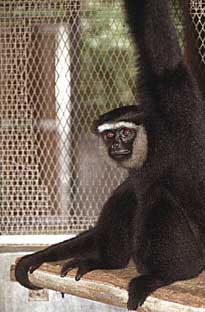 |
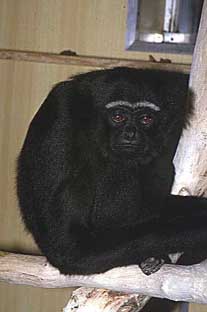 |
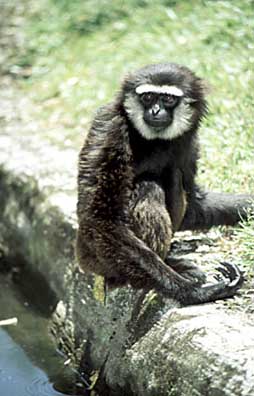 |
Adult male, Singapore Zoo, 5 Sept. 1993.
Dark variant. Notice the light cheek patches which frequently occur in males of this
species. |
Adult male "Sebastian", Twycross Zoo, England,
3 Oct. 1988.
Dark variant. Not all male agile gibbons exhibit distinct light cheek patches. |
Adult male , Taman Safari Zoo, Cisarua, Indonesia,
16 Sept. 1998.
Dark variant. In some males, the light cheek patches are pure white. |
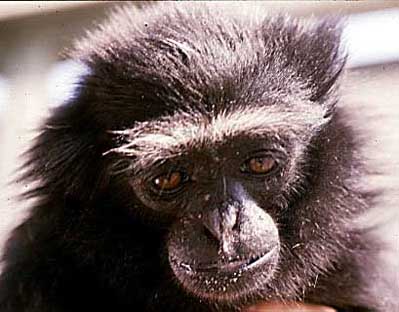 |
 |
Adult female, Tierspital Zürich, Switzerland,
25 Sept. 1985.
Dark variant. This young adult female shows a distinct light brow band, like most
agile gibbons. |
Adult female, Ragunan Zoo, Jakarta, Indonesia, 11 Sept.
1998.
Dark variant. This female lacks the white brow band; the animals is almost completely
black. |
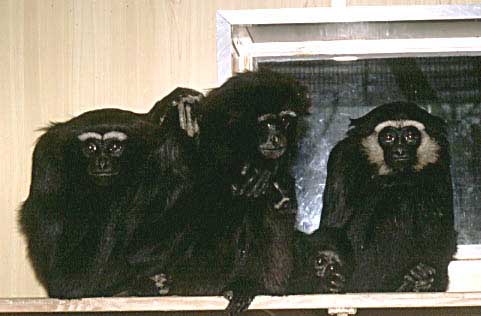 |
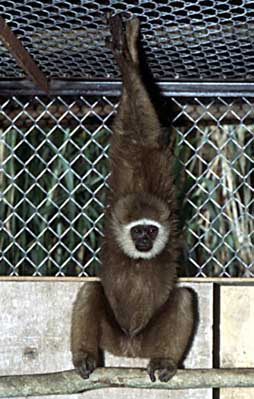 |
Adult female "Sabina" (centre), subadult
daughter "Shana" (left), juvenile son "Ash" (right) and infant
female "Sita" (botton), Twycross Zoo, England, 6 Oct. 1988.
Dark variant. The father of the immature animals is shown among the photographs above
("Sebastian"). Notice that the juvenile and the subadult both show a more
distinct light brow band than their mother and the infant. The juvenile male is the
anly individual exhibiting light cheek patches in this family group. |
Juvenile female "Sheila", Taman Safari Zoo,
Cisarua, Indonesia, 20 Sept. 1998.
Intermediate variant. The individual has a complete, broad white face ring. This
characteristic may occur more frequently in immature animals. |
 |
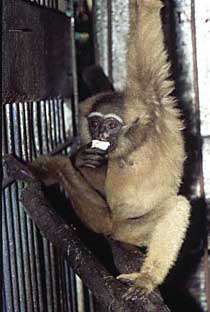 |
|
Juvenile female, Ragunan Zoo, Jakarta, Indonesia, 11
Sept. 1998.
Intermediate variant. This young female shows an almost complete light face ring. |
Juvenile female, Ragunan Zoo, Jakarta, Indonesia, 11
Sept. 1998.
Light variant: This almost monochromatic lgiht brown animal has a distinct dark cap. |
|













